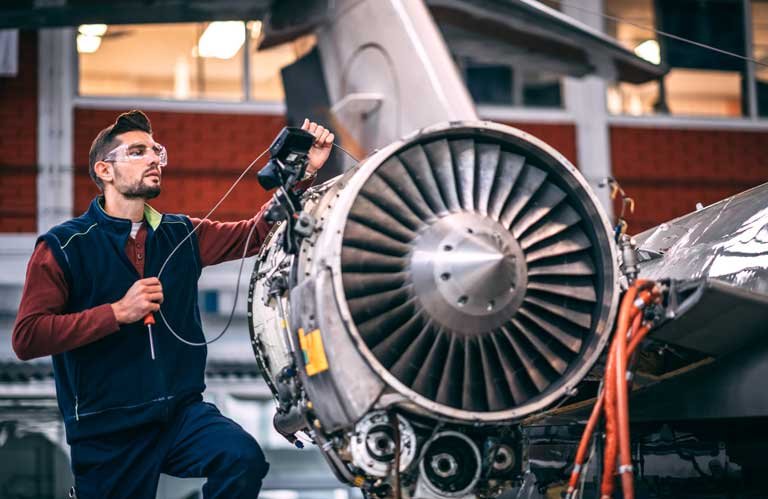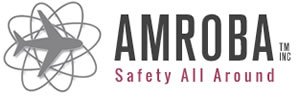Aircraft maintenance controls encompass a range of procedures, processes, and systems aimed at ensuring the safe, reliable, and efficient operation of an aircraft. These controls are essential to comply with aviation regulations and industry best practices.
With AIOA’s Maintenance Control services, you can leave the intricate task of ensuring your aircraft’s compliance to us. Our team diligently handles all the research and implementation necessary to meet Airworthiness Directives and requirements. When your aircraft completes its 100-hour inspection, you can be confident in its full compliance. Your focus can remain solely on flying, while we take care of the rest.

Maintenance Controls
At AIA, we provide comprehensive Maintenance Control services to ensure your aircraft operates safely and efficiently in accordance with aviation regulations. Our expert team oversees compliance, addressing Airworthiness Directives and requirements, so you can focus on flying with peace of mind.
Using advanced software systems, our experienced specialists accurately track maintenance records, facilitating detailed invoicing and effective maintenance planning. This approach keeps our clients ahead in aircraft management.
Understanding the unique needs of each operator, we specialize in crafting customized solutions, from adapting maintenance tracking systems to developing personalized maintenance programs. Contact AIA today to elevate your aircraft’s maintenance and ensure regulatory compliance.

(CAMO) Continuing Airworthiness Management Organisation
As a leading Continuing Airworthiness Management Organisation (CAMO), AIA is committed to ensuring the airworthiness compliance of our clients’ aircraft. With extensive experience in aviation, we adeptly navigate complex regulatory frameworks, minimizing aircraft downtime while maximizing compliance.
Aligned with CASA Australia’s, FAA & EASA regulations, we provide comprehensive services for private aircraft operators. At AIA, our expertise lies in creating customized maintenance plans and offering flexible, real-time solutions tailored to meet each operator’s unique needs.
Moreover, as your CAMO provider, AIA can assist you in various ways. We can help you navigate regulatory requirements, manage maintenance schedules, and coordinate with maintenance providers. Additionally, we offer ongoing support and guidance to ensure that your aircraft remains in compliance and operates safely and efficiently. Trust us to handle all aspects of continuing airworthiness management, allowing you to focus on flying confidently and safely.
AIA Aircraft Maintenance Controls:
Maintenance Programs
Implementing a detailed maintenance plan that includes regular inspections and upkeep activities tailored to the aircraft's model, age, and operational frequency.
Regulatory Compliance
Maintaining adherence to regulatory standards set by aviation bodies like the FAA in the U.S. and EASA in Europe.
Maintenance Documentation
Thoroughly recording all maintenance tasks, from inspections to repairs, in logs to effectively track the aircraft's service history.
Maintenance Planning
Creating precise maintenance schedules to reduce aircraft downtime and maintain flight operations, while prioritizing safety and airworthiness.
Quality Control & Assurance
Enforcing quality control measures to ensure maintenance tasks meet set standards and are executed properly.
Inventory & Parts Management
Overseeing a stock of spare parts to support maintenance, ensuring availability of essential components.
Reliability Programs
Executing reliability programs to monitor aircraft systems, identify potential issues, and proactively resolve them to avoid failures.
Technical Records Management
Keeping detailed, current technical records, such as maintenance manuals and airworthiness directives, to aid maintenance efforts.
Supplier & Vendor Oversight
Overseeing ties with aircraft parts and service suppliers to guarantee quality and dependability.
Safety Management Systems
Incorporating maintenance procedures into a Safety Management System (SMS) to address and reduce safety risks.
Auditing & Inspections
Performing frequent audits and inspections to verify adherence to maintenance standards and regulations.
Data Analysis & Trend Monitoring
Evaluating maintenance data to spot trends, forecast component failures, and enhance processes based on data insights.
Continual Improvement
Constantly refining maintenance methods and systems for better safety, efficiency, and cost-effectiveness.
Implementing a detailed maintenance plan that includes regular inspections and upkeep activities tailored to the aircraft’s model, age, and operational frequency.
Maintaining adherence to regulatory standards set by aviation bodies like the FAA in the U.S. and EASA in Europe.
Thoroughly recording all maintenance tasks, from inspections to repairs, in logs to effectively track the aircraft’s service history.
Creating precise maintenance schedules to reduce aircraft downtime and maintain flight operations, while prioritizing safety and airworthiness.
Enforcing quality control measures to ensure maintenance tasks meet set standards and are executed properly.
Overseeing a stock of spare parts to support maintenance, ensuring availability of essential components.
Executing reliability programs to monitor aircraft systems, identify potential issues, and proactively resolve them to avoid failures.
Keeping detailed, current technical records, such as maintenance manuals and airworthiness directives, to aid maintenance efforts.
Overseeing ties with aircraft parts and service suppliers to guarantee quality and dependability.
Incorporating maintenance procedures into a Safety Management System (SMS) to address and reduce safety risks.
Performing frequent audits and inspections to verify adherence to maintenance standards and regulations.
Evaluating maintenance data to spot trends, forecast component failures, and enhance processes based on data insights.
Constantly refining maintenance methods and systems for better safety, efficiency, and cost-effectiveness.
Some key components of aircraft maintenance controls include:
- Maintenance Programs: Establishing and adhering to a comprehensive maintenance program that outlines scheduled inspections, checks, and maintenance tasks based on the aircraft's type, age, and usage.
- Regulatory Compliance: Ensuring compliance with aviation authorities' regulations and guidelines, such as the Federal Aviation Administration (FAA) in the United States or the European Union Aviation Safety Agency (EASA) in Europe.
- Maintenance Documentation: Properly documenting all maintenance activities, including inspections, repairs, and modifications, in maintenance logs and records. This documentation is essential for tracking the aircraft's maintenance history.
- Maintenance Planning: Developing detailed maintenance plans and schedules to minimise aircraft downtime and disruptions to flight operations while ensuring safety and airworthiness.
- Quality Control & Assurance: Implementing quality control and quality assurance processes to monitor and verify that maintenance tasks are performed correctly and in compliance with established standards.
- Inventory & Parts Management: Managing an inventory of spare parts and components to support maintenance activities, ensuring that critical parts are available when needed.
- Reliability Programs: Implementing reliability programs to track the performance of aircraft systems and components, identify potential issues, and proactively address them to prevent failures (AEROTRACK)
- Technical Records Management: Maintaining accurate and up-to-date technical records, including maintenance manuals, service bulletins, and airworthiness directives, to support maintenance activities.
- Supplier and Vendor Oversight: Managing relationships with suppliers and vendors of aircraft parts and services to ensure quality and reliability.
- Safety Management Systems (SMS): Integrating maintenance processes into an SMS to identify and mitigate safety risks associated with maintenance activities.
- Auditing and Inspections: Conducting regular internal and external audits and inspections to assess compliance with maintenance standards and regulations.
- Data Analysis and Trend Monitoring: Analyzing maintenance data to identify trends, predict component failures, and make data-driven decisions to improve maintenance processes.
- Continual Improvement: Continuously evaluating and improving maintenance processes, procedures, and systems to enhance safety, efficiency, and cost-effectiveness.
Our team of Aircraft Maintenance specialists at AIOA boasts extensive experience in maintenance control and planning. We utilize an advanced, integrated software program to meticulously track aircraft maintenance records, ensuring accuracy and providing detailed invoicing for our clients. This tool serves as an invaluable resource in maintenance planning, helping our clients stay ahead in aircraft management.
Understanding that each operator has unique needs, AIOA is committed to providing bespoke solutions. Whether it’s adapting our maintenance tracking platform or crafting individualized maintenance programs, our approach is always tailored to meet the specific requirements of our clients. Reach out to us to discuss how AIOA can enhance your aircraft’s maintenance and compliance management.

Pre purchase inspections
Empowering aircraft buyers and sellers with well-informed choices. Our independent documentation reviews are grounded in our unwavering dedication to excellence and safety



